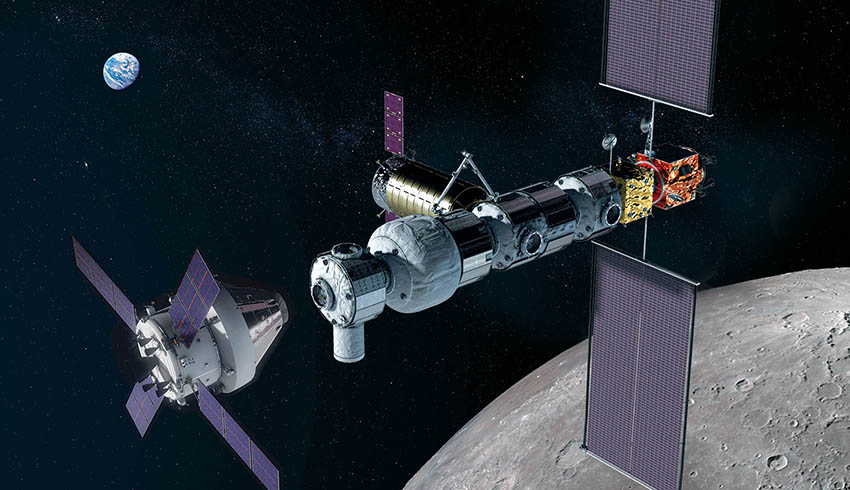
Orbital Science Corporation of Dulles, Virginia, a wholly owned subsidiary of Northrop Grumman Space, has been awarded US$187 million to design the habitation and logistics outpost (HALO) for the Gateway, which is part of NASA’s Artemis program and will help the agency build a sustainable presence at the moon.
This award funds HALO’s design through its preliminary design review, expected by the end of 2020. The HALO will be the pressurised living quarters where astronauts will spend their time while visiting the Gateway.
About the size of a small studio apartment, it will provide augmented life support in tandem with NASA’s Orion spacecraft. The preliminary design review is one of a series of checkpoints in the design life cycle of a complex engineering project before hardware manufacturing can begin.
As the review process progresses, details of the vehicle’s design are assessed to ensure the overall system is safe and reliable for flight and meets all NASA mission requirements.
NASA administrator Jim Bridenstine said, "This contract award is another significant milestone in our plan to build robust and sustainable lunar operations. The Gateway is a key component of NASA’s long-term Artemis architecture and the HALO capability furthers our plans for human exploration at the moon in preparation for future human missions to Mars."
This cost plus incentive fee contract allows Northrop Grumman to finalise the design of all systems and subsystems. It also provides for the company to award initial subcontracts for long-lead hardware elements.
A second contract action is expected to be definitized by the end of the year for Northrop Grumman to fabricate and assemble HALO for integration with the Gateway’s power and propulsion element (PPE) by the end of 2023.
These first two elements of the Gateway – HALO and PPE – will launch together in 2023. This is a recent update to the agency’s plans to build a sustainable presence at the moon as part of the Artemis program.
The decision to integrate the elements on the ground prior to launch – an outcome of the agency’s program status assessment – reduces both cost and technical risks while enhancing the likelihood of mission success by eliminating the need for the two elements to dock in the orbit around the moon where the Gateway will operate.
Dan Hartman, Gateway program manager at NASA’s Johnson Space Centre in Houston, added, "We’re making significant progress on these first two elements, including incorporation of components from ESA (European Space Agency), the Canadian Space Agency, the Japan Aerospace Exploration Agency, and payloads from our research communities."
The PPE, being designed and built by Maxar Technologies, is equipped with high-power, 60-kilowatt solar electric propulsion. In addition to providing power and communications, its substantial manoeuvring capabilities will allow the Gateway to change orbits and enable crews to reach any part of the moon’s surface.
Northrop Grumman’s habitation module, developed through NASA’s NextSTEP initiative, is based on its Cygnus spacecraft currently being used to deliver cargo to the International Space Station.
"The new plan to integrate the two elements of Gateway demonstrates the capabilities of the agency and our partners to be flexible and reassess plans as needed. By launching the elements together, we’re able to significantly reduce Gateway’s risk profile and increase cost effectiveness," Hartman added.
The company’s existing production capability and manufacturing assets allow it to build the HALO with limited schedule risk. NASA’s Launch Services Program will select a launch provider for PPE and HALO by late fall 2020.
Charged with returning to the moon in the next four years, NASA’s Artemis program will reveal new knowledge about the moon, Earth, and our origins in the solar system.
The Gateway is a vital part of NASA’s deep space exploration plans, along with the Space Launch System (SLS) rocket, Orion spacecraft, and the human landing system that will carry astronauts to the surface of the moon in preparation for NASA to sending humans on a historic first journey to Mars.
Receive the latest developments and updates on Australia’s space industry direct to your inbox. Subscribe today to Space Connect here.









